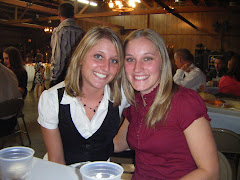**What is Achondroplasia?**
Achondroplasia is the most common skeletal dysplasia and is caused by defective fibroblast growth factor receptor 3 in endochondral chondrocytes. Achondroplasia may have high cervical myelopathy due to stenosis of the craniocervical junction. Achondroplasia is a type of autosomal dominant genetic disorder that is a common cause of dwarfism, which is a bone growth disorder that is the most common type of growth hormone deficiency. This condition leaves the average adult at a short stature, reaching a height of only 4 feet to 4 feet ½ inches tall. This pathology affects approximately 1 in 25,000 people.
**Causes**
Achondroplasia may be inherited as an autosomal dominant trait, which means that if a child gets the defective gene from one parent, the child will have the disorder. If one parent has achondroplasia, the infant has a 50% chance of inheriting the disorder. If both parents have the condition, the infant's chances of being affected increases to 75%. Most cases appear as spontaneous mutations though.
**Symptoms**
Achondroplasia is most often evident at birth. Characteristic features can be seen with diagnostic radiology, with other imaging modalities, and ultrasound. With ultrasound, the diagnosis of achondroplasia can sometimes be suspected before birth. Some of the symptoms include, but are not limited to: Abnormal hand appearance with persistent space between the long and ring fingers, bowed legs, decreased muscle tone, disproportionately large head-to-body size difference, prominent forehead, shortened arms and legs, short stature, spinal stenosis, spine curvatures called kyphosis and lordosis. Achondroplasia symptoms may also be associated with several health problems, including breathing disorders, obesity, and recurrent ear infections.
**Treatment**
There is no specific treatment for achondroplasia. It is important that all patients with this condition have regular visits with their physician to make sure that possible symptoms of this pathology are prevented if possible. There are a number of medical complications that patients with achondroplasia will go through, but patients with this condition have normal intelligence and can live a normal life span. The most important thing for a patient that is diagnosed with achondroplasia is to remember they are capable of doing almost all the task that an average adult can. Patients just have to learn to adapt with the environment and make changes to accommodate for their height difference.

This is Amy and Matt Roloff. They are from the t.v. show Little People Big World on TLC. Amy and Matt both have achondroplasia (dwarfism). They have 4 children, 1 with achondroplasia too and the other 3 are average height.

Image of the lower limbs/pelvis of a patient with Achondroplasia.

Hand radiograph of a patient with Achondroplasia.

No comments:
Post a Comment